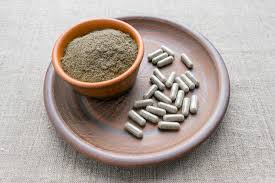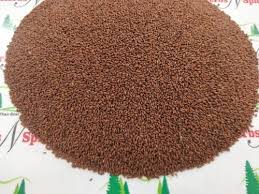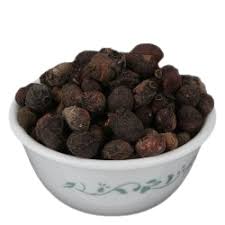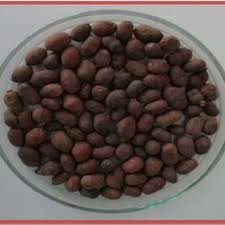How Babchi Seed Can Be Used in Ayurvedic Face Cleansers
In a world flooded with chemical-based skincare products, people are now turning back to nature for gentle, effective, and sustainable solutions. Ayurveda, India’s ancient system of medicine, offers a treasure trove of herbal ingredients for radiant and healthy skin. One such powerful yet often overlooked herb is Babchi seed (Psoralea corylifolia), known as Bakuchi in Ayurveda.
At Dirghaanshi, we believe in bringing natural wellness to your daily skincare routine. Babchi seed has long been used in Ayurvedic remedies for skin disorders, pigmentation issues, and rejuvenation. But did you know it also works wonders in herbal face cleansers? Babchi not only purifies the skin but also supports natural healing, evens skin tone, and gently exfoliates impurities.
In this article, we explore how Babchi seed can be used in Ayurvedic face cleansers, DIY recipes, benefits, and tips for using it safely and effectively.
✨ Long Description (Approx. 850+ words)
🌱 What is Babchi Seed?
Babchi seed comes from the Psoralea corylifolia plant and has been a staple in Ayurvedic and Chinese medicine for centuries. It is known for treating skin issues like vitiligo, eczema, and psoriasis. Its active compound, bakuchiol, is a natural alternative to retinol—offering anti-aging and skin-renewing effects without irritation.
Babchi seed also possesses antibacterial, antifungal, antioxidant, and anti-inflammatory properties—making it ideal for deep cleansing and skin rejuvenation.
🧴 Why Use Babchi Seed in Face Cleansers?
Cleansing is the first and most crucial step in any skincare routine. An Ayurvedic face cleanser with Babchi seed can offer these benefits:
✅ 1. Deep Cleansing & Detoxification
Babchi seed removes toxins, dirt, and excess oil from the pores while supporting the natural detoxification of the skin.
✅ 2. Exfoliation Without Harsh Chemicals
Crushed Babchi seeds gently exfoliate dead skin cells and promote new cell regeneration, giving the skin a smooth and bright appearance.
✅ 3. Improves Skin Tone & Texture
Babchi is known for reducing pigmentation, dark spots, and blemishes, resulting in an even and radiant complexion.
✅ 4. Prevents Acne & Breakouts
Thanks to its antibacterial and antifungal properties, Babchi helps fight acne-causing bacteria and keeps the skin clear and balanced.
✅ 5. Soothes Inflammation
The anti-inflammatory compounds in Babchi reduce redness, swelling, and irritation, making it ideal for sensitive or acne-prone skin.
🧘♀️ How to Use Babchi Seed in Ayurvedic Face Cleansers
🔸 1. Babchi Powder Cleanser (Daily Use)
Ingredients:
1 tbsp Babchi seed powder
1 tbsp Multani Mitti (Fuller’s Earth)
½ tsp Neem powder
Rose water or milk (as needed)
Method:
Mix all powders in a bowl. Add rose water or milk to form a paste. Gently massage on wet face in circular motions and rinse with lukewarm water. Use 3–4 times a week.
Benefits:
Removes impurities, controls excess oil, evens out skin tone.
🔸 2. Herbal Babchi Ubtan (Weekly Exfoliation)
Ingredients:
1 tbsp Babchi seed powder
1 tsp sandalwood powder
1 tsp turmeric
1 tbsp gram flour (besan)
Water or yogurt
Method:
Combine all ingredients and apply on damp skin. Let it sit for 10 minutes, then scrub gently and rinse.
Benefits:
Brightens the skin, removes tan, unclogs pores, and smoothens fine lines.
🔸 3. DIY Babchi Oil Cleanser (Double Cleansing Method)
Ingredients:
5 drops Babchi seed oil
1 tsp cold-pressed almond or jojoba oil
Method:
Massage on dry face for 2–3 minutes to remove makeup or dirt. Wipe with a soft towel or rinse with lukewarm water.
Benefits:
Removes makeup and sunscreen while nourishing the skin deeply.
📜 Babchi Seed in Traditional Ayurvedic Skincare
In Ayurveda, Babchi is classified under “Kusthaghna” (herbs that treat skin diseases) and “Rasayana” (rejuvenating agents). It is said to balance Kapha and Vata doshas, both of which, when imbalanced, can cause dull, dry, or irritated skin.
Babchi was traditionally:
Used in Lepa (herbal paste) for treating vitiligo and eczema
Mixed with ghee and applied for improving skin pigmentation
Included in facial oils for improving youthful glow and skin tone
🔐 Precautions While Using Babchi Seed
Always do a patch test before applying it to the full face.
Babchi can make the skin sensitive to sunlight. Use sunscreen if using Babchi in your morning routine.
Use diluted forms or combine with soothing ingredients like aloe vera or sandalwood to avoid irritation.
Not recommended for broken skin or open wounds.
🌼 Combining Babchi with Other Ayurvedic Herbs
To make your Babchi-based face cleansers more potent and skin-friendly, you can combine it with:
Manjistha – for blood purification and glow
Neem – for acne control
Turmeric – for anti-inflammatory effects
Sandalwood – for cooling and brightening
Aloe vera – for soothing and hydration
💬 Real Reviews and Results
Many natural skincare enthusiasts have found visible improvements in acne scars, pigmentation, and dullness after using Babchi in their DIY face cleansers. It has especially helped:
Reduce acne marks
Even out skin tone
Improve texture and tightness
Users at Dirghaanshi report smoother, clearer, and brighter skin within a few weeks of consistent use.
🧴 Ready-to-Use Babchi Ayurvedic Cleansers
If DIY isn’t your style, look for Ayurvedic products containing Babchi seed extract or oil in combination with:
Reetha (soapnut)
Tulsi
Licorice root
Rose petals
These products are gentle, chemical-free, and suitable for all skin types.
🌟 Conclusion: Embrace Nature’s Cleanser
Babchi seed is more than just a remedy for skin ailments—it is a holistic ingredient that purifies, nourishes, and rejuvenates. Adding Babchi seed to your Ayurvedic face cleanser is a simple and effective way to enhance your skincare naturally.
At Dirghaanshi, we advocate for safe, sustainable, and herbal beauty rituals. Whether you make your own ubtan or use a ready-to-go cleanser, Babchi seed can bring a beautiful glow and youthful clarity to your skin—the Ayurvedic way.













